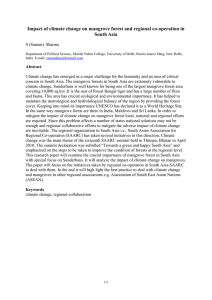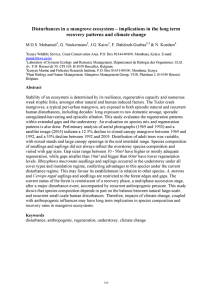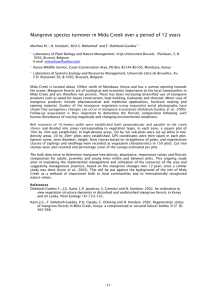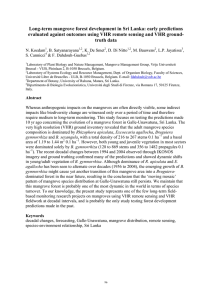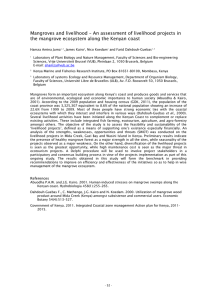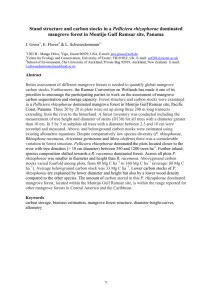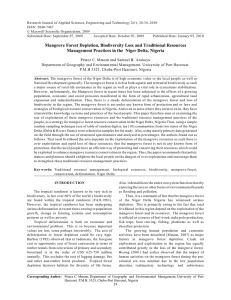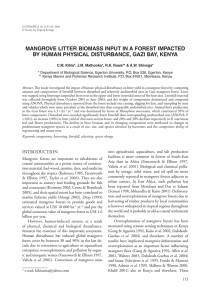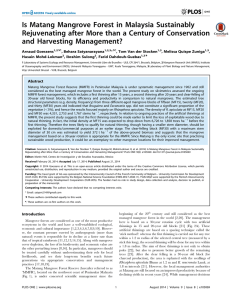Regeneration of a mangrove forest in a nature reserve and
advertisement
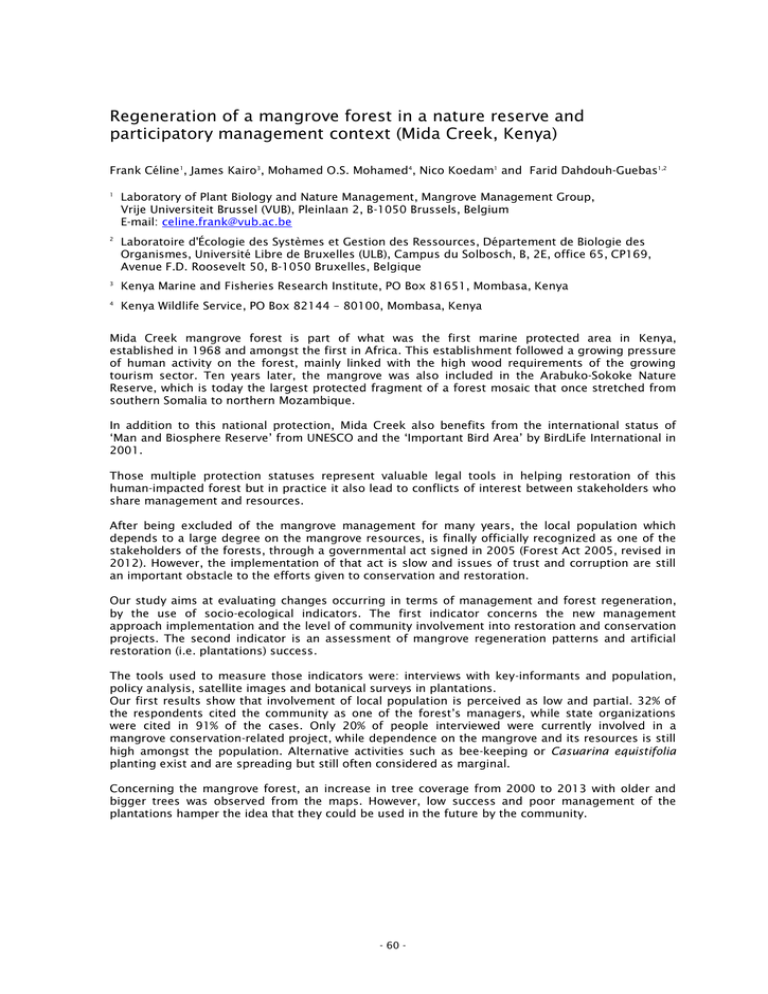
Regeneration of a mangrove forest in a nature reserve and participatory management context (Mida Creek, Kenya) Frank Céline1, James Kairo3, Mohamed O.S. Mohamed4, Nico Koedam1 and Farid Dahdouh-Guebas1,2 1 Laboratory of Plant Biology and Nature Management, Mangrove Management Group, Vrije Universiteit Brussel (VUB), Pleinlaan 2, B-1050 Brussels, Belgium E-mail: celine.frank@vub.ac.be 2 Laboratoire d'Écologie des Systèmes et Gestion des Ressources, Département de Biologie des Organismes, Université Libre de Bruxelles (ULB), Campus du Solbosch, B, 2E, office 65, CP169, Avenue F.D. Roosevelt 50, B-1050 Bruxelles, Belgique 3 Kenya Marine and Fisheries Research Institute, PO Box 81651, Mombasa, Kenya 4 Kenya Wildlife Service, PO Box 82144 – 80100, Mombasa, Kenya Mida Creek mangrove forest is part of what was the first marine protected area in Kenya, established in 1968 and amongst the first in Africa. This establishment followed a growing pressure of human activity on the forest, mainly linked with the high wood requirements of the growing tourism sector. Ten years later, the mangrove was also included in the Arabuko-Sokoke Nature Reserve, which is today the largest protected fragment of a forest mosaic that once stretched from southern Somalia to northern Mozambique. In addition to this national protection, Mida Creek also benefits from the international status of ‘Man and Biosphere Reserve’ from UNESCO and the ‘Important Bird Area’ by BirdLife International in 2001. Those multiple protection statuses represent valuable legal tools in helping restoration of this human-impacted forest but in practice it also lead to conflicts of interest between stakeholders who share management and resources. After being excluded of the mangrove management for many years, the local population which depends to a large degree on the mangrove resources, is finally officially recognized as one of the stakeholders of the forests, through a governmental act signed in 2005 (Forest Act 2005, revised in 2012). However, the implementation of that act is slow and issues of trust and corruption are still an important obstacle to the efforts given to conservation and restoration. Our study aims at evaluating changes occurring in terms of management and forest regeneration, by the use of socio-ecological indicators. The first indicator concerns the new management approach implementation and the level of community involvement into restoration and conservation projects. The second indicator is an assessment of mangrove regeneration patterns and artificial restoration (i.e. plantations) success. The tools used to measure those indicators were: interviews with key-informants and population, policy analysis, satellite images and botanical surveys in plantations. Our first results show that involvement of local population is perceived as low and partial. 32% of the respondents cited the community as one of the forest’s managers, while state organizations were cited in 91% of the cases. Only 20% of people interviewed were currently involved in a mangrove conservation-related project, while dependence on the mangrove and its resources is still high amongst the population. Alternative activities such as bee-keeping or Casuarina equistifolia planting exist and are spreading but still often considered as marginal. Concerning the mangrove forest, an increase in tree coverage from 2000 to 2013 with older and bigger trees was observed from the maps. However, low success and poor management of the plantations hamper the idea that they could be used in the future by the community. - 60 -
